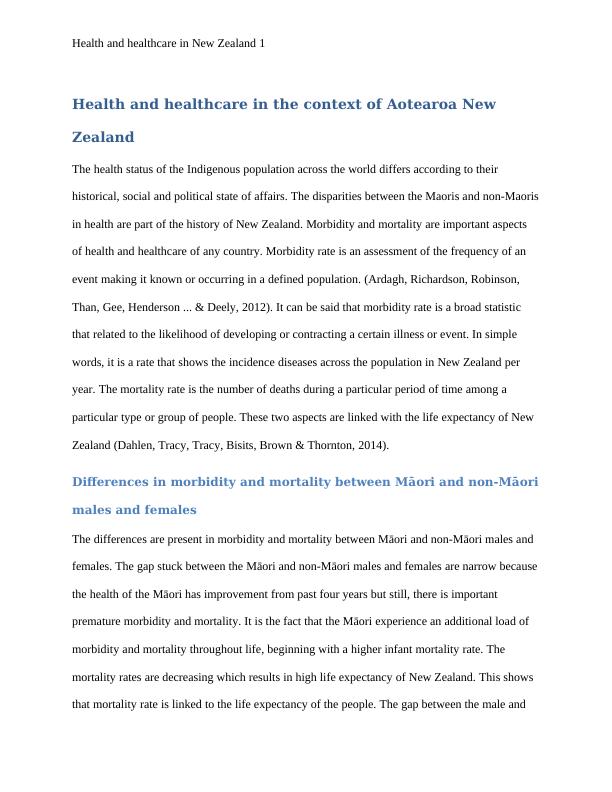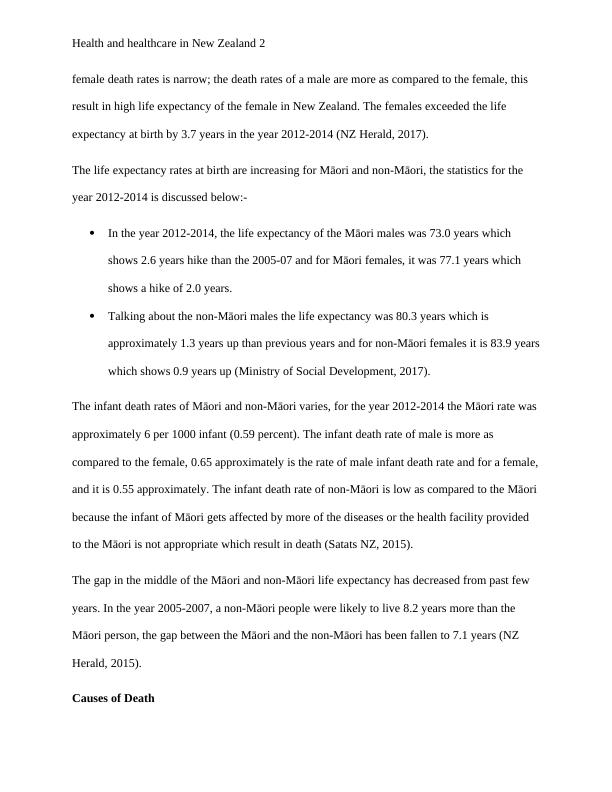Health and healthcare in New Zealand
16 Pages4596 Words67 Views
Added on 2020-04-29
About This Document
Health and healthcare in New Zealand 2012-2014 11 Running Head: Health and healthcare in New Zealand Health and healthcare in the context of Aotea Lungora New Zealand Health and healthcare in the context of Aotearoa New Zealand The health status of the Indigenous population across the world differs according to their historical, social and political state of affairs. The gap stuck between the Mori and non-Mori males is narrow because the health of the Mori has improved from past four years but still
Health and healthcare in New Zealand
Added on 2020-04-29
ShareRelated Documents
End of preview
Want to access all the pages? Upload your documents or become a member.
New ZEALAND EPIDEMIOLOGY: A new approach to epidemiology
|20
|5397
|77
Life Expectancy in New Zealand and Japan: A Comparison
|11
|2883
|257
Life expectancy Assignment PDF
|11
|2892
|129
Health Status Indicators of Cultures in New Zealand | Report
|10
|2181
|21
Māori People Health: New Zealand
|13
|1053
|316
Social Model Of Health - POPLHLTH102
|10
|2251
|41




